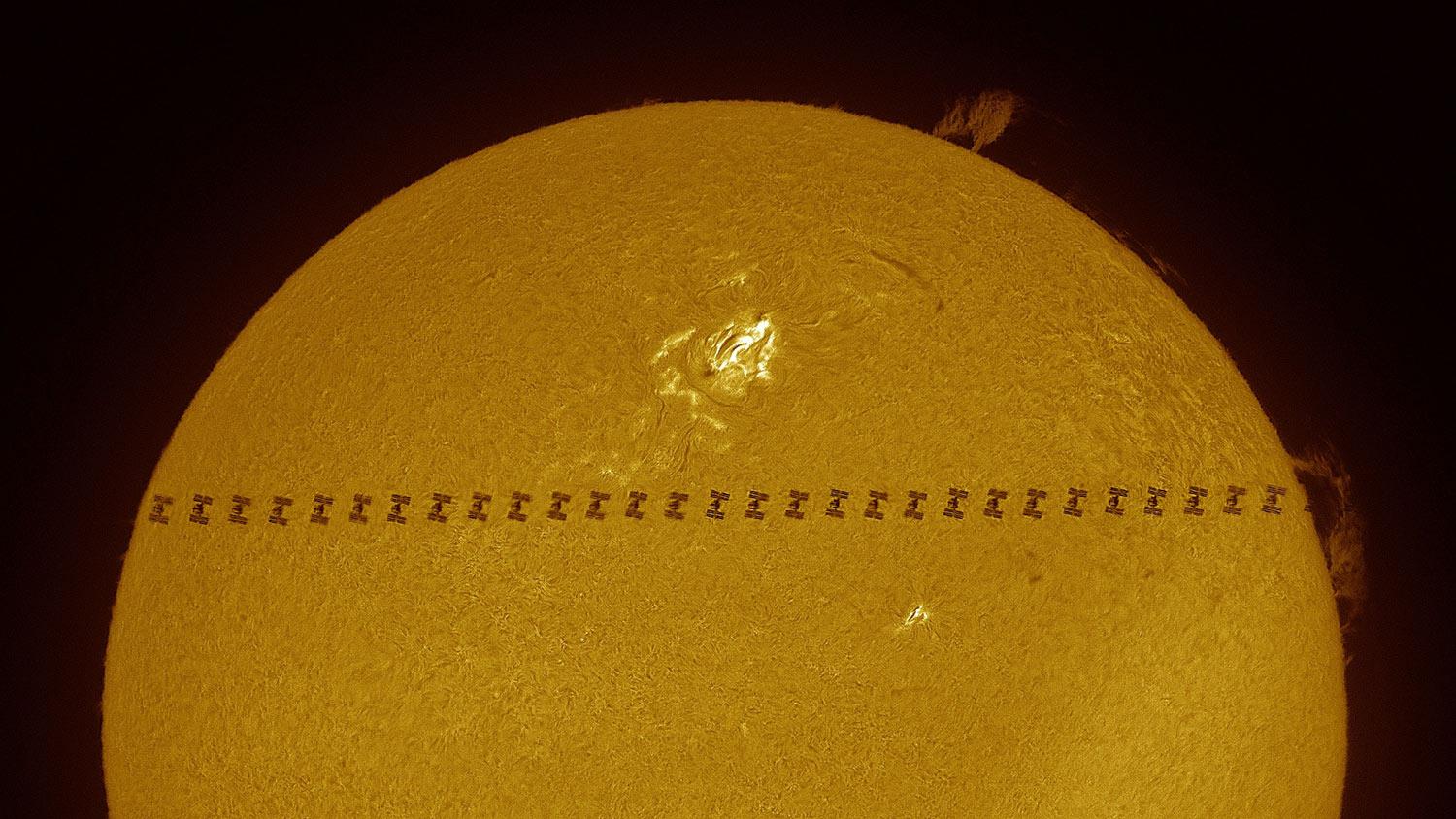So you’re taking telescopic photographs of the Sun, watching the solar disk seethe under intense forces while blasting huge, towering prominences tens of thousands of kilometers into space, when your photo is completely ruined by a rude photobomber:

Photo by Thierry Legault, used by permission.
Or, in this case, it’s actually awesome because catching the International Space Station crossing the Sun’s face is precisely why you were observing in the first place.
That image was taken by top-of-his-game astrophotographer Thierry Legault. It’s a composite of several video frames from Aug. 21, timed perfectly to capture the ISS from his location. That’s no easy task; the tilt and timing of the orbit of the ISS coupled with Earth’s rotation means it only passes in front of the Sun as seen from the ground at very specific locations and times. If you’re off by a few kilometers you miss it. There’s software that makes this a lot easier now (like CalSky), but it’s not exactly simple.
Here’s the original video. Don’t blink!
Legault, who has taken so many pictures of ISS (and Shuttle and Hubble) transits that I’ve lost count (including one during a solar eclipse), told me this one excited him because he’s always wanted to catch the station moving directly across a prominence. There are two big ones in the photo—they’re huge blasts of plasma off the Sun’s surface, swept outward by the Sun’s violently shifting magnetic field. They can last for many hours, but don’t appear to change at all over the half-second or so it took ISS to cross the Sun.
That made things even harder for Legault. CalSky gives the central transit line, the locations on Earth where ISS passes over the center of the Sun. Legault then had to modify the calculation, moving a kilometer or two so that ISS would miss the center but pass over that prominence.
That’s dedication, folks.
Just above the ISS’s path is a pretty dramatic sunspot group, the twisting plasma between the spots glowing brightly. This photo uses a special filter (called an H-alpha filter) that only lets through a very narrow slice of color, specifically where hydrogen glows when heated. Usually, the fierce light at all wavelengths/colors washes detail out, but only letting this particular wavelength through means seeing lots of astonishing surface features on the Sun.
Pretty amazing. But for Legault, “amazing” is where he starts from.